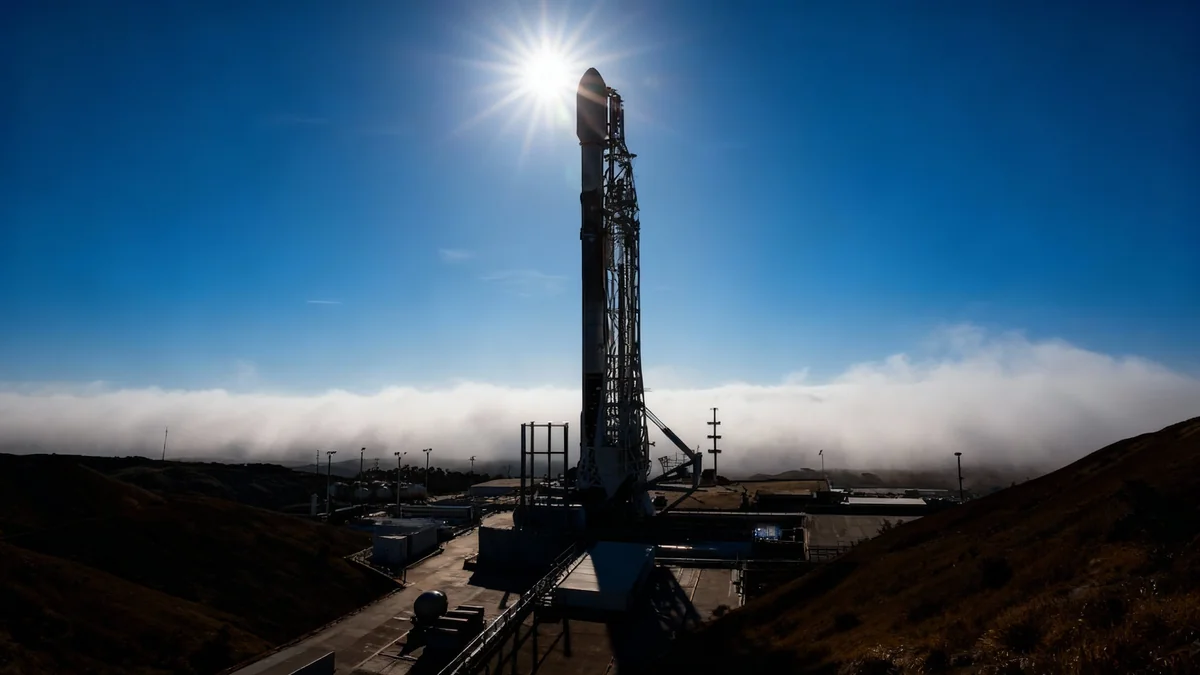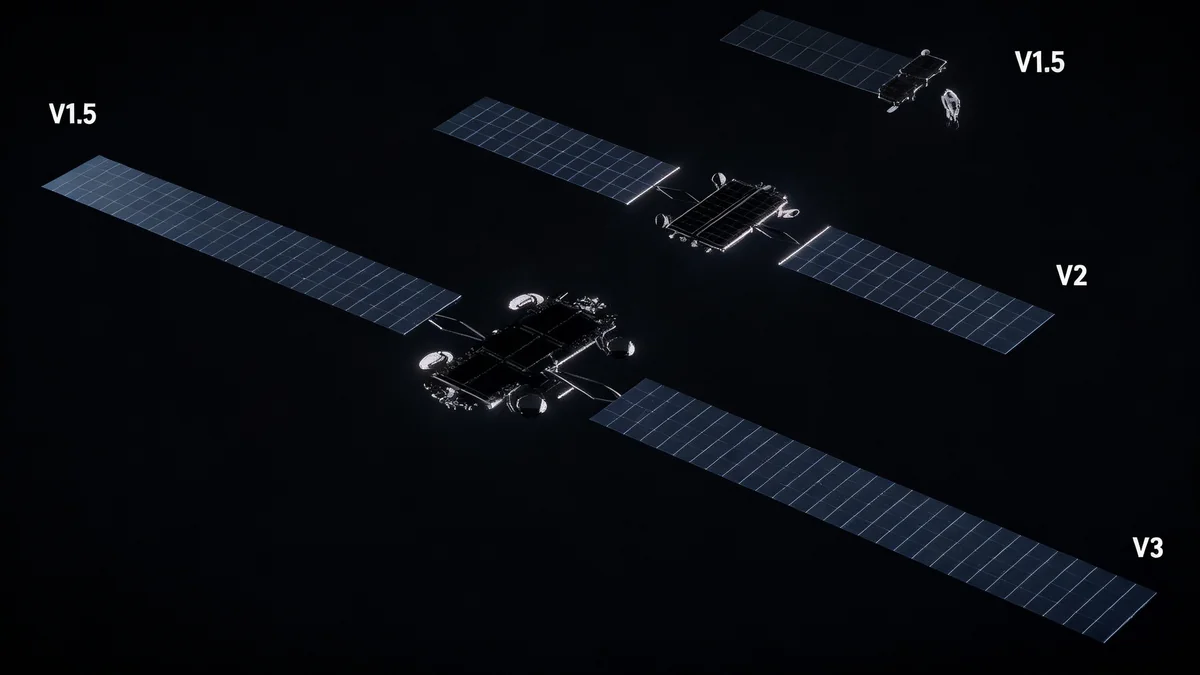SpaceX is set to launch its 100th Starlink mission of 2025 from California on Thursday, continuing the rapid expansion of its satellite internet constellation. The mission, designated Starlink 11-23, will utilize one of the company's most experienced Falcon 9 boosters to carry another batch of satellites into low Earth orbit.
The launch is scheduled for Thursday afternoon from Vandenberg Space Force Base. This flight underscores the company's aggressive launch schedule, which has seen it deploy thousands of satellites this year alone, significantly increasing the size and capability of its global broadband network.
Key Takeaways
- SpaceX is scheduled to launch its 100th Starlink mission of 2025 on October 31.
- The flight will add 28 Starlink V2 Mini satellites to the growing megaconstellation.
- The mission will use the Falcon 9 booster B1063, the oldest in service, for its 29th flight.
- This launch continues SpaceX's high-frequency deployment, with over 2,500 satellites launched in 2025.
A Milestone Mission from Vandenberg
SpaceX is targeting a launch window that opens at 1:41 p.m. Pacific Daylight Time on Thursday from Space Launch Complex 4 East at Vandenberg Space Force Base. The Falcon 9 rocket will travel on a south-easterly trajectory after lifting off from the California coast.
Onboard this landmark flight are 28 Starlink V2 Mini satellites. These newer generation satellites are designed to provide enhanced broadband capacity and speed for the Starlink network, which delivers internet service to users across the globe.
The successful deployment of this payload will further bolster a constellation that is already the largest of its kind. The consistent pace of launches has been a defining feature of SpaceX's operations throughout 2025.
What is the Starlink Constellation?
Starlink is a satellite internet constellation operated by SpaceX, providing satellite Internet access coverage to over 70 countries. It aims to deliver high-speed, low-latency internet to underserved and rural areas worldwide. The system relies on thousands of mass-produced small satellites in low Earth orbit that communicate with designated ground transceivers.
The Workhorse Booster B1063
A key element of this mission is the reuse of the Falcon 9 first-stage booster, a practice that has dramatically reduced the cost of access to space. For the 100th Starlink flight of the year, SpaceX will use its oldest active booster, designated B1063.
This particular booster has a long and storied history. Its first mission was on November 21, 2020, when it launched the Sentinel-6A ocean-monitoring satellite. Thursday's launch will mark its 29th flight, a testament to the durability and reliability of the Falcon 9 hardware.
Following stage separation approximately two and a half minutes into the flight, the first stage will perform a series of burns to reorient itself for a return to Earth. It is scheduled to land autonomously on the drone ship ‘Of Course I Still Love You’, positioned in the Pacific Ocean.
Booster Landing Milestones
If the landing is successful, it will be the 162nd time a booster has landed on this specific drone ship and the 527th overall booster landing for SpaceX. This remarkable record of recovery and reuse is central to the company's business model and high launch rate.
Expanding the Digital Sky
The pace of Starlink deployment in 2025 has been relentless. The company has already launched more than 2,500 of its broadband satellites this year. This rapid expansion is critical to building out global coverage and increasing network capacity to serve more users.
According to data from orbital trackers, the total number of Starlink satellites currently in orbit exceeds 8,800. Each launch adds to this number, creating a dense web of connectivity that blankets the planet.
SpaceX has shown no signs of slowing down. The company's public launch schedule indicates plans for at least eight more Starlink missions before the Thanksgiving holiday in late November. These upcoming flights are expected to add another 228 satellites to the constellation in just a few weeks.
The ability to launch, land, and relaunch boosters at such a high frequency has fundamentally changed the economics of spaceflight, enabling ambitious projects like the Starlink megaconstellation to become a reality.
The Impact of Reusability
The story of the 100th Starlink launch is inseparable from the story of rocket reusability. The Falcon 9 rocket was designed from the ground up to be reusable, a feat once considered nearly impossible by many in the aerospace industry. By recovering and reflying the most expensive part of the rocket, the first stage, SpaceX has been able to offer launch services at a fraction of the cost of its competitors.
This cost reduction has not only benefited SpaceX's commercial customers but has also enabled the company to pursue its own capital-intensive projects. The Starlink network, which requires thousands of individual satellites to be launched, would be financially unfeasible without a fleet of reusable rockets to deploy them.
The success of boosters like B1063, which has now flown nearly 30 missions, demonstrates the maturity of the technology. Each successful landing and subsequent flight provides valuable data that helps engineers refine the systems and push the boundaries of what is possible, paving the way for even more ambitious goals, including future missions to the Moon and Mars.





